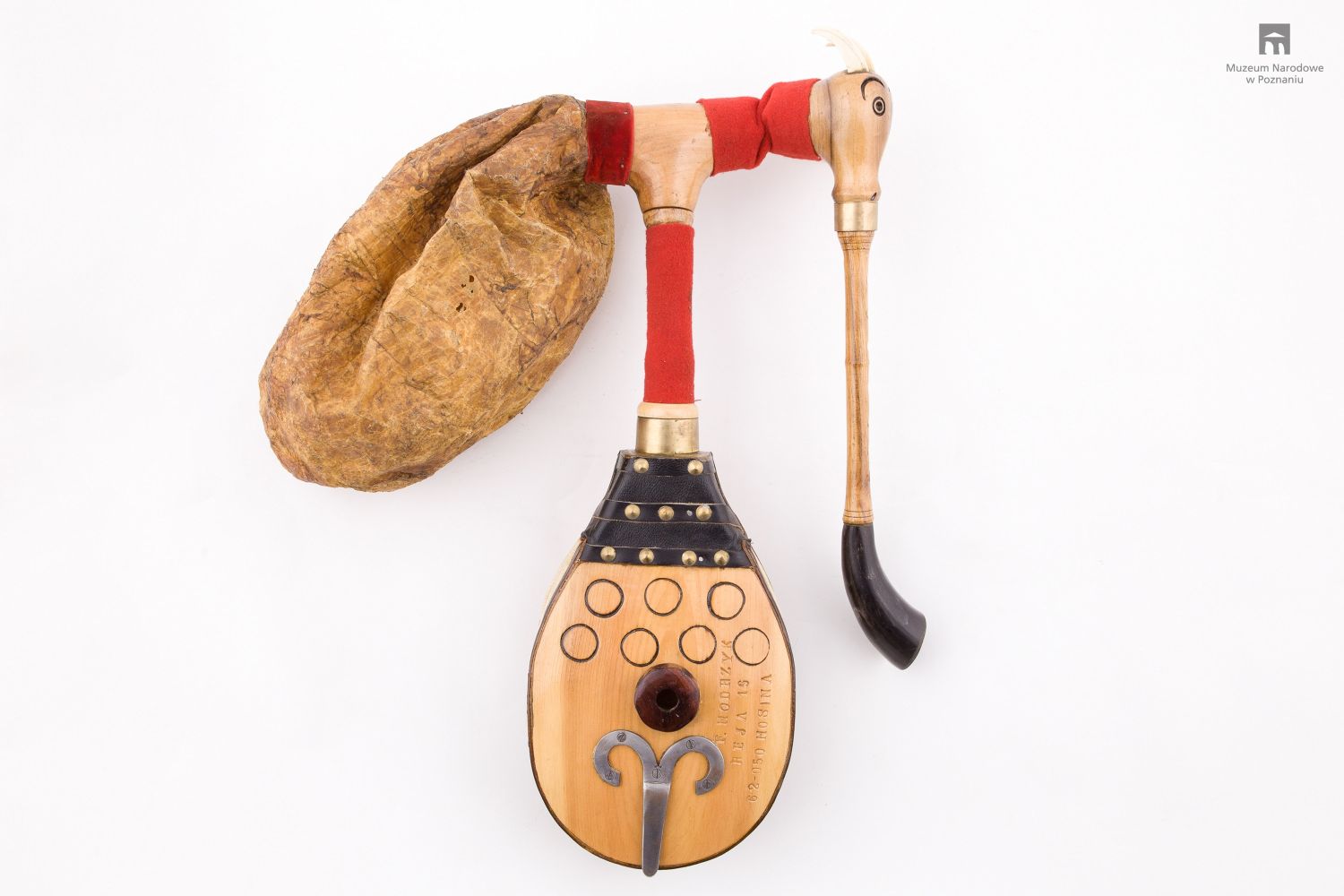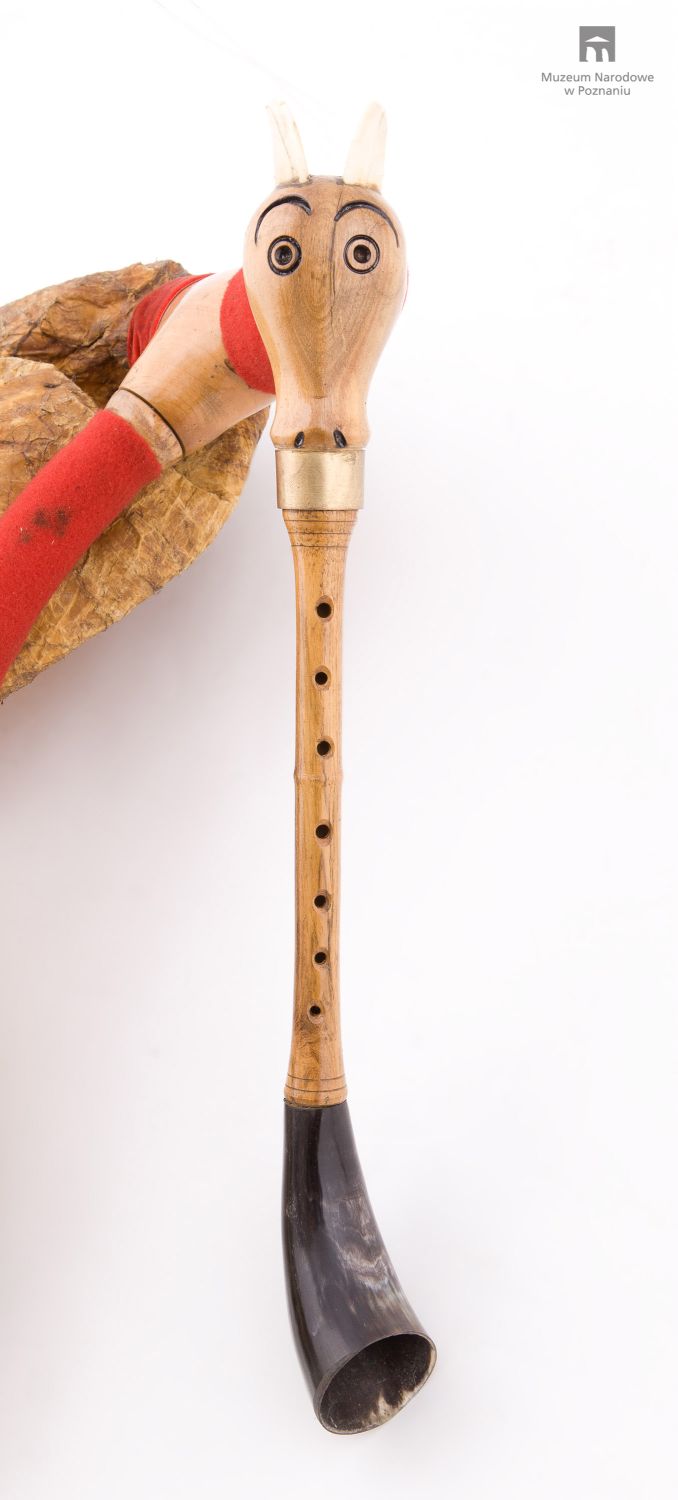bagpipe (bladder pipe)
bagpipe (bladder pipe)
Local name: siesieńki, sierszeńki, sieszynki, sieszynie, sierszynki, sierszynie, pancharzyna, sierszeńki z dymkąClassification: 4 Aerophones / 42 Wind instruments proper / 422 Reedpipes / 422.2 Reedpipes with single reeds (clarinets) / 422.21 Individual reedpipes with single reeds / 422.211 With cylindrical bore / 422.211.2 With fingerholes / 422.211.2-62 Single-reed chanter with cylindrical bore, with fingerholes, flexible air reservoir Single-reed chanter with cylindrical bore, with fingerholes, flexible air reservoir
Maker: Modrzyk Florian
Date: 1987
Village / Town: Mosina
Region: Greater Poland
Country: Poland
Owner: Ethnographic Museum, department of National Museum in Poznań
Inventory number: MNP E 6452
Description: a single voice bagpipe with a bellow; single bag made from an animal bladder; single-reed; cylindrical chanter with eight fingerholes, one underneath, one tuning hole near the lightly bent bell; mouthpiece
Decoration: chanter with goat head at the beginning and horn bell; connection wraped in red cloth; bellow embelished with burnt in circles, studded
Measurements: chanter 280 mm, bellows 290 mm
Materials: wood, bladder, horn, metal, cloth, boar’s fangs
Inscriptions: impressed on bellows: F. MODRZYK / REJA 19 / 62-050 MOSINA
Sound compass, tuning: formerly not established, after World War II in west Greater Poland the instrument was supplied with a chanter from the white goat tuned in E-flat and with a diatonic scale b♭ – c' – d' – e♭' – f' – g' – a♭' – b♭' – c''
Performance practice: a shepherd's instrument, used at the first stage of learning how to play bagpipe, reactivated after World War II for didactical purposes in the S. Moniuszko Music School in Zbąszyń, partly used in the folk revival, too
Catalog card by: Aneta Skibińska / Zbigniew J. Przerembski
Wiwat, a wedding dance; Jan Pajchrowski (b. 1911, Gnin), sierszeńki; rec. Warsaw 1949; Sources of Polish Folk Music
<< Back










